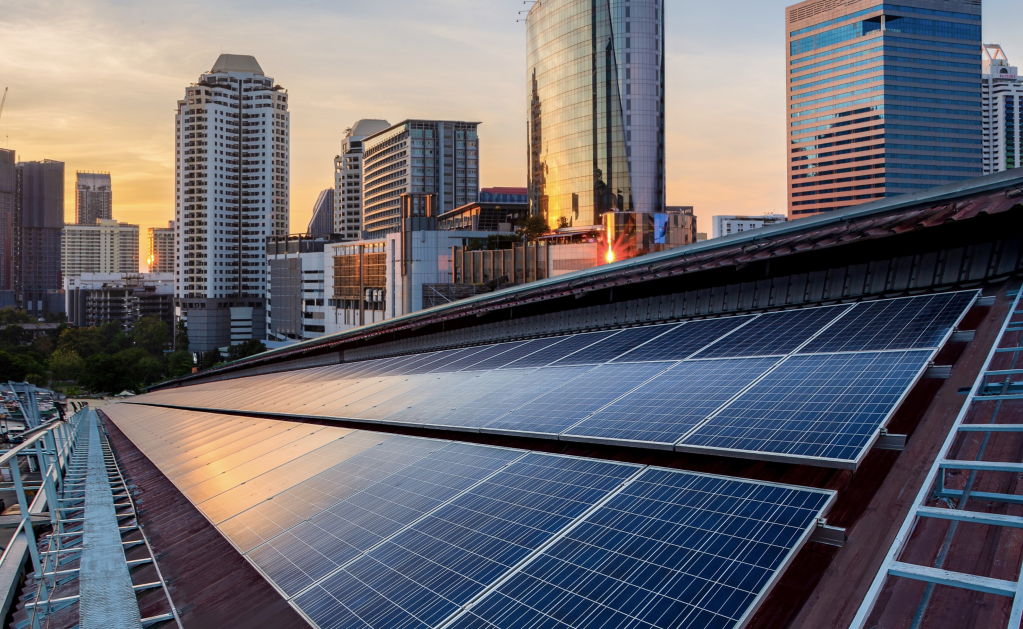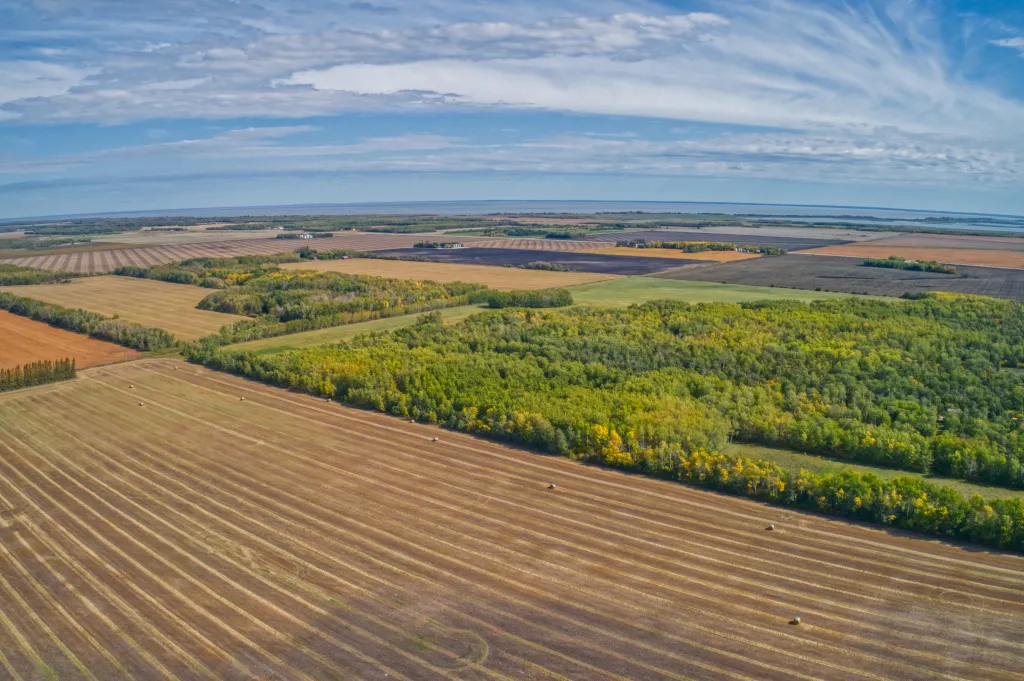TLDR
-
Vancouver’s Greenhouse Gas and Energy Limits bylaw targets the largest source of building emissions: heating and hot water
-
Emissions reporting is already required for large commercial buildings and continues to be phased in
-
Emissions intensity limits come into effect in 2026, with tougher targets by 2040
-
Financial and planning supports are available to help building owners
The RBC Sustainable Finance Expert Panel Series brings together business and industry leaders to exchange ideas and drive progress toward a low-carbon and resilient economy. An event in Vancouver focused on the Greenhouse Gas and Energy Limits Bylaw, exploring its implications for the commercial real estate sector and how businesses can prepare for the changes ahead.
In Vancouver, as in many cities around the world, families, communities, businesses and the economy are impacted by the effects of severe weather events. In 2022, following record-setting floods, wildfires and heat domes experienced by the Greater Vancouver Area, the city approved the Greenhouse Gas and Energy Limits Bylaw as part of its Climate Energy Action Plan. The main objective of the bylaw is to reduce emissions from the largest sources (heating and hot water) while transitioning to low-carbon and renewable energy sources.
At the recent panel event, experts from the climate, finance and municipal sectors came together to explore how businesses can navigate the bylaw, take meaningful beneficial action and access support along the way.
Moderated by Colin Guldimann, Director Sustainable Finance, Commercial Banking at RBC, the panel featured insights from Eric Chisholm, Co-founder and Principal at Purpose Building, which specializes in real estate decarbonization, and Micah Lang, who leads carbon reduction initiatives for multi-family and commercial buildings with the City of Vancouver.
Understanding the Greenhouse Gas and Energy Limits Bylaw
The bylaw has a goal of reducing big building emissions to 50% by 2030 and 100% by 2050. It has two main components: emissions reporting and emissions intensity limits.
Emissions reporting
The bylaw’s emissions reporting requirements are being introduced in phases, with some buildings already required to comply.
-
June 1, 2024, owners of commercial buildings over 100,000 square feet were required to submit an energy and carbon report to the City of Vancouver for the 2023 calendar year and must submit for all subsequent years.
-
June 1, 2025, reporting expanded to commercial buildings above 50,000 square feet and multi-family buildings over 100,000 square feet.
-
June 1, 2026, owners of multi-family buildings over 50,000 square feet will have to file their first report.
Lang revealed that compliance in the first reporting year was notably high. “We had 90-91% compliance of the buildings covered by the first year of the bylaw. It was a great start,” he shared, adding that most of the buildings had already begun tracking their energy use. Compliance hasn’t been as high for the second cohort of buildings, but Lang offered that there are more challenges, particularly for multi-family building owners. As a result, the city is offering a timeline extension and extra supports.
Emissions intensity limits
The bylaw also sets limits on the intensity of greenhouse gas (GHG) emission and heat energy. Set to take effect in 2026 through a phased approach, these limits apply only to office and retail buildings over 100,000 square feet. “These limits were designed to impact the worst-performing quartile of the building stock — and they’re meant to be an easy first step for buildings that haven’t yet taken action,” said Lang.
The second set of limits come into effect in 2040. While it may seem like a long way off, Lang noted that the limits are a significant step down and “represent the end state we’re hoping existing buildings can achieve.” The extended lead time allows owners to align major equipment replacements with their capital planning cycles.
The approved limits for large commercial buildings and phase-in dates are as follows:
-
2026 – GHGI limit of 25 kg of CO2e per square metre per year for office space
-
2026 – GHGI limit of 14 kg of CO2e per square metre per year for retail space
-
2040 – GHGI limit of 0 kg of CO2e per square metre and heat energy intensity limit of 0.09 GJ per square metre per year for both office and retail space
What the bylaw means for the commercial real estate sector
For building owners, the bylaw builds confidence in the benefits of taking action today. Reporting and planning ahead lead to making decisions today that help achieve future compliance with the bylaw, but also contribute to the long-term sustainability of your business:
“Regulation is useful in clarifying what’s going on in the market,” said Lang. “But the regulation is not the fundamental that you’re reacting to. The fundamental is the impact climate change is having on your business, on our economy and on ourselves. A regulation is a way to help that happen as smoothly as possible and to make it clear for everyone what the terms of engagement are.”
Key actions for building and business owners
1. Plan retrofits around equipment life cycles
With a long lead time to 2040, building owners can plan upgrades as systems age out. “If you’re replacing fans, choose a more efficient model,” suggests Guldimann. “If you have windows or insulation that need to be replaced, try to find the most efficient or the next most efficient improvements you can make so that in 2040, you’re in a good position to make the switch to electric heating.”
2. Overhaul inefficient heating systems:
In BC, 90% of building emissions are related to gas or district steam powered heating systems. Effectively reducing emissions, therefore, centres around new systems. “Upgrading boilers isn’t going to cut it,” says Lang, noting that such a replacement might yield a 10-20% improvement. Rather, replacing outdated systems with fully electrified or dual-fuel, efficient heating solutions, like heat pumps, will make a difference. “This is the one technology that combines efficiency with electrified heating in a way that allows us to shift away from a gas-based heating culture,” he says.
Tip: Heat pumps also work as air conditioners. During periods of extreme heat, a heat pump can help cool a warehouse, for instance, allowing you to continue operations when you might otherwise need to shut down due to health and safety concerns.
3. Get an energy study or asset transition strategy done:
An energy audit helps you understand your building systems and plan for retrofits, while an asset transition strategy “identifies opportunities, costs, benefits and ideal timelines to define – and preferably optimize – the economics of decarbonizing a building,” explains Chisholm. Together, these tools lay the groundwork for smart capital decisions and often enable access to incentives.
4. Start reporting (if you haven’t yet):
When it comes to reporting emissions, building owners can start by visiting the City of Vancouver website and setting up an account with ENERGY STAR® Portfolio Manager. You’ll then share your profile with the City’s ESPM account (this step is necessary before you file your BPRS report) and claim your building in the Building Performance Reporting System (BPRS) website.
5. Leverage resources and support:
The panel acknowledged that the economic benefits of retrofitting – like extreme weather resilience and utility savings – come alongside challenges like retrofit construction cost and effort. Fortunately, a growing ecosystem of tools, programs and funding is available to help owners make the transition.
For example, the Clean Technology Investment Tax Credit offers a 30% rebate on eligible equipment and engineering costs. “In addition to grants and utility rebates, many owners are finding this is a valuable resource to help with costs related to clean technologies,” shares Chisholm.
Resources and support for building owners
Whether you’re just starting to report or actively planning a retrofit, support is available. The path to low-carbon operations isn’t one-size-fits-all, and building owners may need different kinds of help at different stages — from high-level strategy to hands-on supporting with funding applications. Here are some independent organizations and tools that can help.
Purpose Building
“Purpose Building helps accelerate real estate toward planet positive pathways — from master planning to new communities, developing new buildings, operating existing ones more efficiently, and renewing them when it’s time” explained Chisholm.
The Purpose Retrofit Accelerator provides retrofit-specific and industry-wide support — partially funded by Natural Resources Canada’s Deep Retrofit Accelerator Initiative (DRAI) — to accelerate deep retrofits of commercial, institutional and mid- or high-rise multi-unit residential buildings across Canada, focusing on private sector assets.
City of Vancouver
The City is partnering with the utilities and industry associations to offer practical support. FortisBC and BC Hydro both offer incentives for energy studies. And starting next year, the City will roll out a free digital decarbonization planning tool for all buildings covered by the bylaw. This will help owners explore retrofit options and plan effectively.
RBC Sustainable Finance
The RBC’s Sustainable Finance team works with clients across a wide range of industries, offering tools, resources and financing solutions to support their transition to a low-carbon and resilient economy. Events like this panel are one way RBC helps clients build sustainable, future-ready operations.
Also, through collaboration with GrantMatch and Carbonhound, RBC clients can access additional specialized expertise. These providers can help identify and guide retrofit strategies, secure incentive funding, as well as track and verify emissions data, making it easier for building owners to benefit from retrofits, manage compliance and project costs.
Choose the right path for your business
Regardless of how regulations evolve, it’s worthwhile to have a plan for transitioning your business toward a low-carbon, resilient future. A good starting point is to understand which buildings may be most at risk, where opportunities lie, and where work may be needed. “Once you have that identified, plan to retrofit as effectively as possible,” advised Chisholm.
While the bylaw provides a clear framework, this work also supports broader goals — from operational resilience to environmental responsibility. And with a growing network of tools and resources, you don’t have to navigate it alone.
The RBC Sustainable Finance team is here to help. Contact your RBC relationship manager to learn more about Sustainable Finance solutions.
Read more: RBC, Carbonhound Partner to Help Businesses Measure, Verify, and Manage Their Carbon Emissions
Read more: RBC aims to collaborate with building landlords to reduce its GHG emissions – RBC News & Stories









